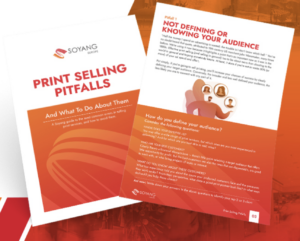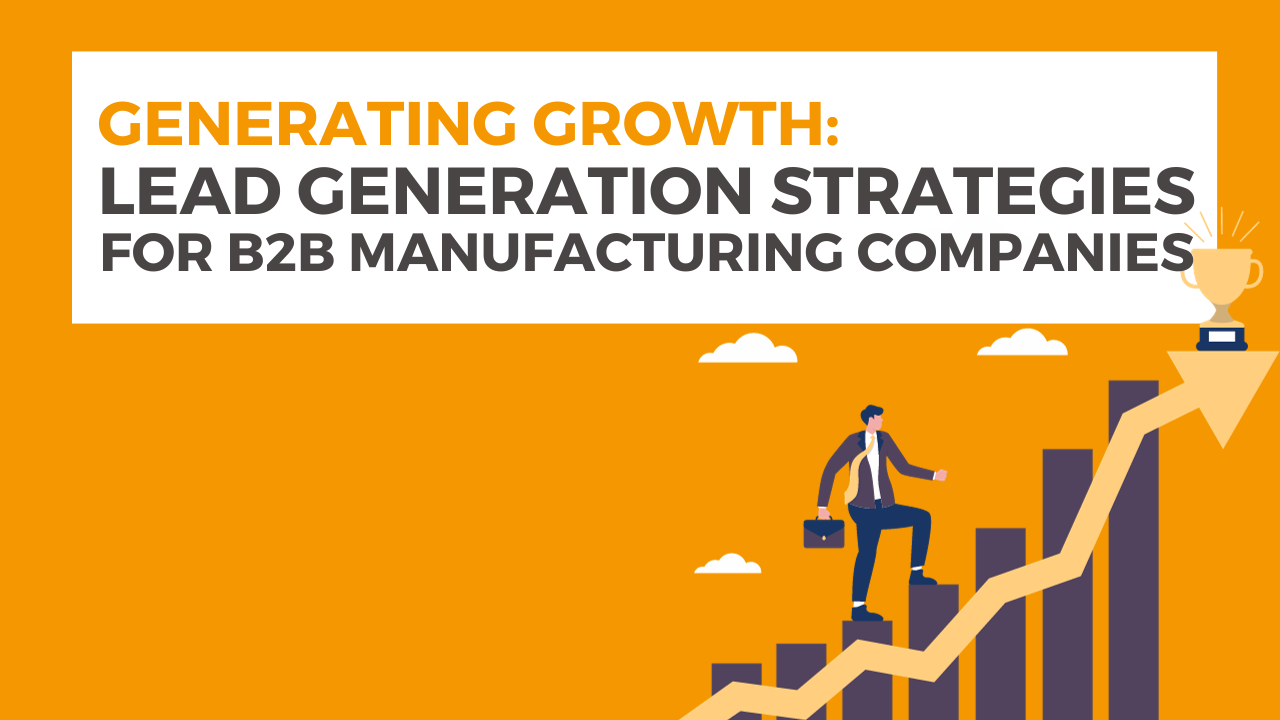In manufacturing things can move very slowly and then suddenly all at once.
Contract renewals and tenders for new suppliers are often an annual or 18 month event, which makes getting results from your marketing all the more challenging.
These manufacturing lead generation strategies are shared best practises based on real life examples within the B2B manufacturing industry.
Related Articles;
Unlocking Success: Digital Marketing Strategies for B2B Manufacturing Companies
Inbound Marketing Strategies for Manufacturers: Tips And Best Practices
From Keywords to Conversions: SEO Strategies for B2B Manufacturers
Driving Success: PPC Advertising Strategies For Manufacturers
The Art of Connection: Social Media Strategies for Manufacturing Companies
Streamlining Success: Marketing Automation Solutions for Manufacturers
From Ideas to Impact: Content Marketing Strategies For Manufacturing Companies
Seasonal and Exhibition-Focussed Ad Campaigns
As the manufacturing industry experiences seasonality, this provides several opportunities throughout the year for a campaign that focuses on the pain points related to either low, or high season, each with their own set of pro’s and con’s.
Marketing towards the challenges of any given period is a tried and tested lead generation tactics for manufacturers.
Seasonality in this industry tends to be focussed around exhibitions. Many manufacturing companies successfully employ advertising campaigns in the build up and days after a popular industry exhibition.
A good approach would be to use a small, to medium sized budget on a platform like LinkedIn, where people can be targeted by their industry, job title and company name as well as location, making it easy for you to get your message in front of people that are likely to have attended a manufacturing exhibition or be interested in the content around it.
In order to start a sales conversation with this audience, a gated resource that targets your audiences pain points gives you the opportunity to display your manufacturing expertise and gather contact information from industry professionals who have the potential to become a customer.
This gated resource could be a white paper, a guide, a checklist or some industry research that you’ve curated yourself or re-purposed from a similar industry and tweaked.
To generate traffic, we’ve had success in the past implementing a geo-targeted social advertising campaign using the postcodes of the exhibition centre and nearby hotels. This reaches people who are actively seeking new manufacturing solutions.
Ready-to-go campaigns triggered by changes in the industry
Is your marketing set up so you’re on the front foot and can promote your services if a competitor increases their prices?
What do you have prepared for when a major competitor goes out of business or reduces their service offering?
Perhaps some legislation has changed that increases demand for your product or service to a new audience?
You need to quickly be able to flick a switch and turn on a campaign that gets your services in front of new customers when the industry changes. Be ready to fill gaps in the market and supply customers who may be looking elsewhere for a new provider or cheaper pricing.
This can be achieved with a targeted PPC campaign on social media.
The campaign assets should include:
- Your company brochure, including a transparent pricing table
- A one pager including a problem, solutions provided and testimonials from your happiest customers
- Clear call to actions like the offer of a connect call, tour of the factory or free sample pack
Being in the right place, at the right time, and with the right message is vital.
Always-on branding campaign
Lead generation for manufacturers isn’t just about having a punt every time there’s something moving or shaking in the industry, in fact, staying relevant is often the result of having a great branding campaign that works simultaneously with your targeted seasonal campaigns.
We advise manufacturers we work with to keep a campaign ‘always on’ but with a smaller daily budget allowing you to build awareness and stay in the forefront of their potential customers’ minds. This way, when your target audience are considering a new vendor, your manufacturing solutions are already on their fourth or fifth impression. You’re seen as established and a lower risk B2B purchase.
Using platforms like Google or Microsoft Ads are great options. They allow you to limit your cost per click, and focus on impressions across their vast display networks (third party websites), meaning your brand will follow customers around with professional graphics and compelling messaging as they search the internet.
However, don’t fall into the trap of measuring the success of brand awareness campaign by the leads they generate. The objective of a top-of-funnel branding campaign is to build awareness of your company. These ‘always-on’ campaigns remind people considering your services that you’re there and they also improve the quality of leads when they do complete a form from a targeted lead generation campaign.
We have included ‘always-on’ campaigns in this post because they are so often overlooked. It can be difficult to persuade your CEO or sales department of the importance of brand awareness campaigns, which don’t show a direct attribution link to leads, but they are an essential part of the marketing mix.
Proven lead generation strategies for manufacturers
Because so much of a campaign’s success depends on creating value-added content, we’re going to share some proven content types that are known to generate leads;
#1 Industry-Specific Selling Guide
Is there one thing that you can guarantee your target audience needs more of now and will need more of in another 5 years?
The answer is sales. Revenue. Gold!
Creating a content offer focussed on how to generate sales within your target audience’s niche is a proven lead generator.
You’ll attract the attention of commercially minded senior managers and key decision makers looking for the next opportunity to grow their business. Once you have their attention as a trusted expert in their niche, you’re in a good place to start a sales conversation regarding your own products and services.
Here’s an example of a report we produced for a manufacturing client that has generated hundreds of leads and is still working well today:

Evergreen campaigns like this are a great use of resources as they’re valid all year round and can be targeted through long-term channels like organic search as part of a wider SEO campaign.
#2 Market Research Survey and Report
There has been a huge increase in companies using annual industry-wide reports to break into and remain front-of-mind within their industries. Why? Because they work.
The downside of such an approach is they require more work than a typical lead generation campaign. They also require advertising budget to ensure the surveys that powers the report reaches enough people. The key to a successful market research report is exploring relevant topics that interest your target audience.
What does it involve?
Start with deciding on the value you can offer from the industry report and use that to outline your questions and the core categories of the report. When we created this for a manufacturer to help them generate leads, we split the categories up into:
- Business demographics
- Sustainability
- Financials
- Events and Trade-shows
- Sales and Marketing
- Customer Relations/Service
The key value here is helping your audience identify where they sit in terms of the business decisions they make everyday amongst their competitors and colleagues.
At the time of the manufacturing campaign we created, there were huge operational impacts within the industry like the aftermath of Brexit and COVID-19. Questions around topical issues allowed us to produce useful content with the survey responses in exchange for new leads contact information.
The key thing to remember is that the report needs to also remind the audience who you are. We included a page on the client’s offerings and frequent CTAs throughout the report to get in touch if they had any questions about their products.
Why is it so effective? You’re positioning yourself as an expert in the industry. You understand your future clients’ challenges. You’re literally writing the book report on those challenges. You are also able to segment the behaviours of the fastest growing companies amongst your recipients and help share the best practices for newer businesses.
This type of lead generation campaign has been amongst our most successful in the manufacturing space. The best part is you generate leads at the survey stage and with the findings of the report. Also, you can update the report every year for a pipeline of ongoing leads.
#3 Financial or Proposal-Related Template Downloads
From one of the most labour intensive lead generation campaigns to the least. A template document allows your target audience to quickly solve a ‘cost of sales’ business problem. For example, if your customers are SMEs, they may not have the resources to invest in departments outside of their core operations i.e. sales, marketing or finance teams.
If this is true, there may be a gap you can fill by providing a framework, template or guideline document. In the same way that brands hand out branded pens and merchandise, your brand can produce digital templates as a marketing exercise to introduce your products to key decision makers.
A proposal template that helps your B2B audience outline their own services is just one example of a template document you could produce in exchange for your target audience’s contact information:
Other examples could include:
- Investment Round Pitch Document Templates
- Social Media Content Calendar Templates
- A Complete Guide to New Industry Regulations following Brexit
The above all require some research but crucially you don’t have to start from scratch. Use what has already been created and add value by adjusting the content so it’s more relevant to your industry. Then use that content to generate leads through paid advertising, organic search, email and press releases.
Lead Generation Strategies for B2B Manufacturers… In Summary
So what is the recipe to a winning B2b manufacturing lead generation marketing campaign?
We’ve reviewed the many campaigns we’ve worked on over 20 years of marketing to consider the common themes below:
- The audience (attention, challenges, pain points and triggers)
- The message (tone, brand, new information shared)
- The offer (CTA, guarantee, solution)
Consider and research these well in advance of launching any manufacturing lead generation activities and start with what you know converts. Involve your sales team as contributors as they’ll have a good understanding of your current clients and target audience.
When considering your audience, review your past customer data in your CRM and find the most common job title so that you can make sure you’re targeting those likely to interact with the materials you offer.
Where possible test the targeted audience, messages and CTA’s on a PPC platform and use data lead insights to better each campaign you run. This could mean trialling an audience of decision makers v.s marketing staff, or testing CTA’s such as ‘get in touch’, compared to ‘download now’ actions.
Finally, don’t forget the power of upselling and promoting referrals amongst your existing customer base. Can you send an email blast to them offering a discount for referrals or for leaving a review that might influence other potential leads? Or maybe give them a first glimpse at any new product and a loyalty discount, generating new leads for new products from the database of people who already trust you.




